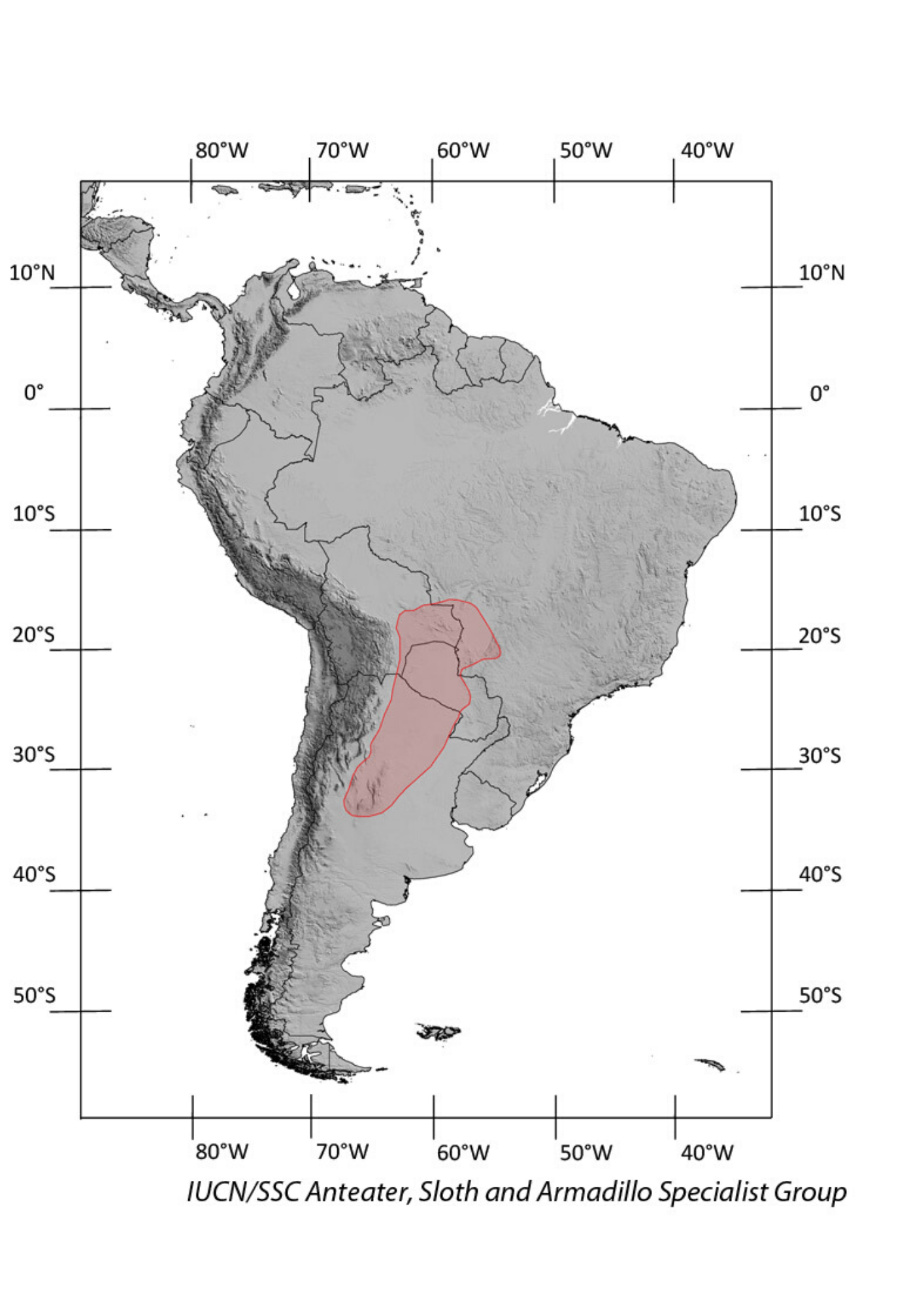Southern three-banded armadillo
(Tolypeutes matacus)
other common names
La Plata three-banded armadillo
Azara’s domed armadillo
Taxonomy
Order: Cingulata
Family: Chlamyphoridae
Subfamily: Tolypeutinae


description
The Southern three-banded armadillo has a head-body length of 20–25 cm and weighs around 1–2 kg. Its carapace is rigid, dome-shaped, generally sandy-yellow to brown, and has 2–4 movable bands. The tail, as well as the head shield, are triangular in shape. There are 3–4 clawed toes on the forefeet, with the third claw being the largest.

diet
This is an opportunistic insectivore that mainly feeds on insects, but also eats plant material such as fruits and seeds.

reproduction
The southern three-banded armadillo reaches sexual maturity at 12 months of age. Gestation occurs in two seasonal peaks, one in July–September and the other in December–February. Gestation length is 114 days, after which a single young is born. Newborns are miniature versions of the adults, with fully developed and hardened claws, and a flexible carapace with a leathery texture. Newborns can walk and roll into a ball soon after birth, open their eyes at about 3 weeks of age, and are weaned after 2.5 months.

Population trend
Decreasing.

curious facts
It was long thought that three-banded armadillos do not dig burrows. This is incorrect. Although they are not as fossorial as other armadillo species and often rest in shallow depressions covered with leaf litter or in straw nests, they can also dig small burrows.

HaBITAT and ECOLOGy
Tolypeutes matacus is mostly found in the dry Chacoan monte, where the vegetation consists of thorny forests and scrub. It can also be found in palm savanna and gallery forest of the Humid Chaco. Southern three-banded armadillos are mainly solitary, except during the breeding season when several males pursue a single female. When feeling threatened, the southern three-banded armadillo can curl up, with the head and tail shields fitting flush with the surrounding carapace to form a tight ball. Home ranges are, on average, 14 hectares (2–46.4 hectares) and can overlap between individuals. Population density estimates vary between 0.42 individuals/ km² in deciduous forest to 7 individuals/ km² in some parts of the Chaco.

threats
Tolypeutes matacus is threatened by hunting for food; as it is not as fossorial as other armadillos, it is easier to hunt than other species. It is also threatened by habitat loss through conversion of suitable habitat to cultivated land; however, it is able to adapt to low levels of agricultural disturbance. This species is exported to zoos and for pet trade, and there is a high mortality of individuals during this export process.

range
This species occurs in eastern Bolivia, southwestern Brazil, the Gran Chaco of Paraguay, as well as in northern and central Argentina.

conservation status
Tolypeutes matacus is listed as Near Threatened because this species is probably in significant decline (albeit at a rate of less than 30% over ten years) because of widespread habitat loss through much of its range, and because of exploitation for food, thus making the species close to qualifying for Vulnerable under criterion A2cd.